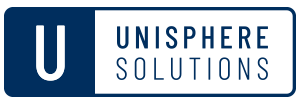Importance of strong passwords and practices
We all know that passwords is the base for all cybersecurity, but do we really understand their importance? Your password is the keys to your digital kingdom, whether it is for a personal account or a work account. Find out more about some of the ways passwords can be breached and what you can do to prevent this.
What is Smishing?
You might know about email phishing - dodgy emails turning up in your inbox. But how much do you know about other phishing attack types? This article delves into phishing that occurs through text messages to your mobile phone.
Are you ready for Cyber Smart Week 2021?
Cyber Smart Week in New Zealand kicks off between the 18th and 22nd of October 2021. This event is run by CERTNZ with the support of other cybersecurity focused businesses in a drive to lift the awareness and cyber resilience of all Kiwis. What have you got planned to get your family, friends, colleagues and staff cyber smart?
Hot Topic: Ransomware
Ransomware has become one of the most prolific attack types seen over the past year. This ever-increasing threat has the potential to cripple your organisation and have long-lasting consequences.
QR Codes - Friend or Foe?
QR codes can be used for many purposes including advertising, displaying information about a business or tracking activities of app users. But what happens when an cyber criminals use them for their own purposes and how can you protect yourself against their attackers
Top Tips When Embarking on a Digital Transformation Journey
Check out Bad Dinosaur founder Kyle's top tips for SMEs who are considering embarking on a digital transformation journey.
Some Tips on How to Protect Yourself on Social Media
Social media is a great way to keep up to date with friends, family and other people in your life as well as promote yourself and your business. Have you ever thought about how to add some protections to stay safe online? Check out our tips!
Security Mindset for Working from Home
The way we work has forever changed off the back of 2020. As working from home becomes the new norm, we will need to adapt our cyber security mindset. Check out our hot tips for keeping your people and sensitive data safe while working out of the office
CERT NZ’s Cyber Smart Week 2020 - 19-23 October
Cyber Smart Week is run by CERT New Zealand with the purpose of increasing the awareness and cyber resilience all New Zealander's so that they are less vulnerable to attacks. There are a number of things you can do to engage your team in Cyber Smart week with a few simple actions and some fun activities.
Changes to New Zealand’s Privacy Laws - Are you ready?
Changes to New Zealand’s Privacy Act come into effect on 1st December 2020. This means that all businesses need to understand these changes, how they relate to their business and what are the mandatory requirements under the new laws.
Strategy, It’s not what you’ve been taught
Who has been fed the plan on a page or the one-page strategy as the guiding light of business transformation? How do you identify your companies secret sauce and capitalise on it?
How to Hack Your Next Planning Session
How to enhance your success rate in delivering outstanding business and IT outcomes.
Strategy isn’t about getting your ducks in a row
Having a plan, goal, vision or strategy is great, executing it successfully and achieving the desired outcome is better. The steps to making this subtle shift are simple.














